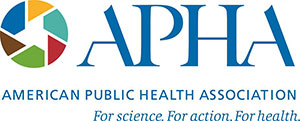The Abstract was presented at the American Public Health Association (APHA) 2022 in Boston, USA between 6 – 9 November 2022

Authors: Yona Nyondo,1 Nennie Lungu,1 Matthew Kankhulungo, 1 Maria Mkandawire,1 Patrick Gwaza,1 Linda Muyumbu, 1 Boniface Maket,1 Jennifer Arney2, Patricia Magombo,3 Ruth Kundecha,3 Tadala Simika,4 Kumbukani Chawinga4
1 FHI 360, Malawi EMPOWER
2 FHI 360, Washington DC
3 CHAM, Malawi EMPOWER
4 Pakachere, Malawi EMPOWER
Introduction
The Expanding Malawi HIV/AIDS Prevention with Local Organizations Working for an Effective Epidemic (EMPOWER) supports the Government of Malawi (GoM)’s commitment to epidemic control by stopping HIV transmission and preventing new HIV infections to adolescent girls. Sexually transmitted infections (STIs) are among the top disease categories for which AGYW seek healthcare services. According to the World Health Organization (WHO), (2005), the highest rates of sexually transmitted infections (STIs) are among the 15-24 age group globally. Furthermore, a study (Torrone EA, et al, 2018), across three primary African regions revealed that all STIs, except Herpes Simplex Virus 2, were more prevalent among AGYW, 15–24 years. These results are in correlation with the EMPOWER FY21 data reported in the shared database. This paper seeks to highlight STI incidences among AGYW age-bands.
Methodology
The secondary analysis utilized collected longitudinal data from 385 STI positive AGYW aged 10-24 years, collected across the 52 sites of Zomba and Machinga districts, between Q1 and Q4 of FY21. Service delivery teams used the STI risk assessment tool to assess risk during service provision. EMPOWER uses the Syndromic Management Approach (SMA) to manage STIs. Hence for all AGYW with a positive STI screen, service delivery teams identified syndrome, diagnosed, and treated or referred accordingly. Quantitative data were analyzed using Microsoft Excel.
Results
Overall, EMPOWER offered STI information to 28,345 AGYW in FY21, of which 385 AGYW were diagnosed for STI, 71% were treated at outreach clinics and 29% were actively referred to health facilities. Specific to incidence among subgroups in cases diagnosed STI positive, the 15-24 years accounted for an average of 84% across all quarters (Q1: 93%, Q2: 81%, Q3: 83%, Q4: 89%) of FY21.
Discussion
Our finding that the prevalence of both STI was higher among AGYW aged 15-24 years is consistent with WHO (2018), which reports that although STIs affect all age-groups, AGYW aged 15–24 years are particularly more vulnerable. This is not surprising given that these young women were more likely to engage in sex with multiple partners, and to be less likely to use condoms consistently with partners. These findings call for need for target-specific risk-reduction interventions stratified by age group.
FHI-360 - Malawi EMPOWER
Bluegum Avenue, Mulima Building,
P.O. Box 521
Zomba
Malawi
Phone: +265 887 827 291
E-mail:BMaket@fhi360.org
Website: www.malawiempower.org
